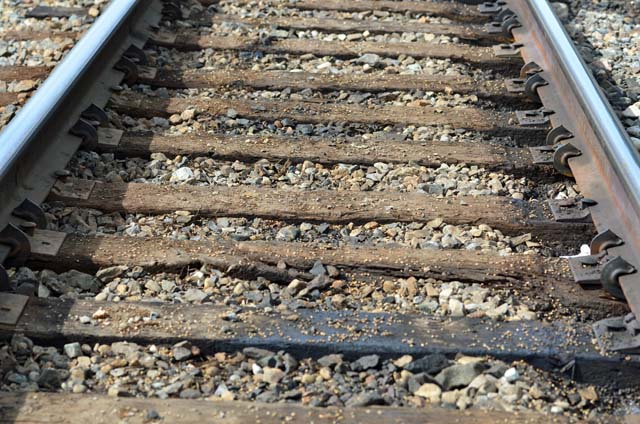
Banff Alberta - A significant grain spill on the Canadian Pacific Railway (CP) in Banff National Park last week attracted wildlife to the
site.
While much focus has been on bears eating spilled grain along the train tracks, Parks Canada wildlife staff noticed a mule deer feeding on the grain about 200
metres east of the Banff station on the morning on 22 Nov 2017.
Parks Canada officials say CP was immediately notified, and a resource conservation officer stayed at the site until CP crews came that same day to clean up
the spill.
"Approximately one wheelbarrow full of grain was at the site," said Christie Thomson, a spokesperson for Banff National Park.
CP officials say the company was quick to respond when informed of the grain spill.
"CP responded immediately and sent a crew to clean it up," said media relations spokesman Jeremy Berry.
Research conducted by the University of Alberta shows the amount of spilled grain through Banff and Yoho national parks is enough to meet the yearly
nutritional needs of about 50 grizzly bears.
The research, released earlier this year, was done as part of the five-year, $1 million study in 2010-15 by Parks Canada and CP to investigate ways to address
unsustainable rates of grizzly bear mortality on the tracks.
Several sampling sites were checked along a 134 kilometre stretch of railway during the study and U of A researchers extrapolated the annual total of spilled
grain was 110 tonnes.
Wheat made up almost 50 percent of the 110 tonnes, and they noted most grain was spilled over winter and available for grizzly bears in spring when they come
out of hibernation.
"When you consider that millions of tonnes is transported through here, 110 tonnes is very small compared to that. But what does it mean
biologically?" asked researcher Aditya Gangadharan at the release of the study in January.
"When we did the calculations, the amount of energy that is in those grains is enough for the gross annual energy needs of about 42 to 50 grizzly bears.
To put that in perspective, the population estimate is something like 50 to 73 bears."
Another research project found elevated levels of contaminants in grain along the railway that may be harmful to wildlife that eat it.
They found heavy metals and hydrocarbons in grain.
The study found average concentrations in grain samples were close to allowable standards for cadmium, were more than twice as high for aluminum, and were
about three times as high for lead.
Railways contain many pollutants such as metals and hydrocarbons, coming from various sources such as material abrasion, machine grease and oil, creosote
treated railway ties, and particulate matter from emissions.
"This can have health consequences for bears and other wildlife," said researcher Sonya Pollock.
Meanwhile, most bears seem to have gone to bed for winter.
The most recent reported sighting of a grizzly bear in Banff National Park was 28 Oct 2017 near Lake Louise.
Tracks were also reported near Lake Louise on 5 Nov 2017.
The last reported black bear sighting occurred on 27 Oct 2017 near Baker Creek.
Cathy Ellis.
under the provisions in
Section 29 of the Canadian
Copyright Modernization Act.



